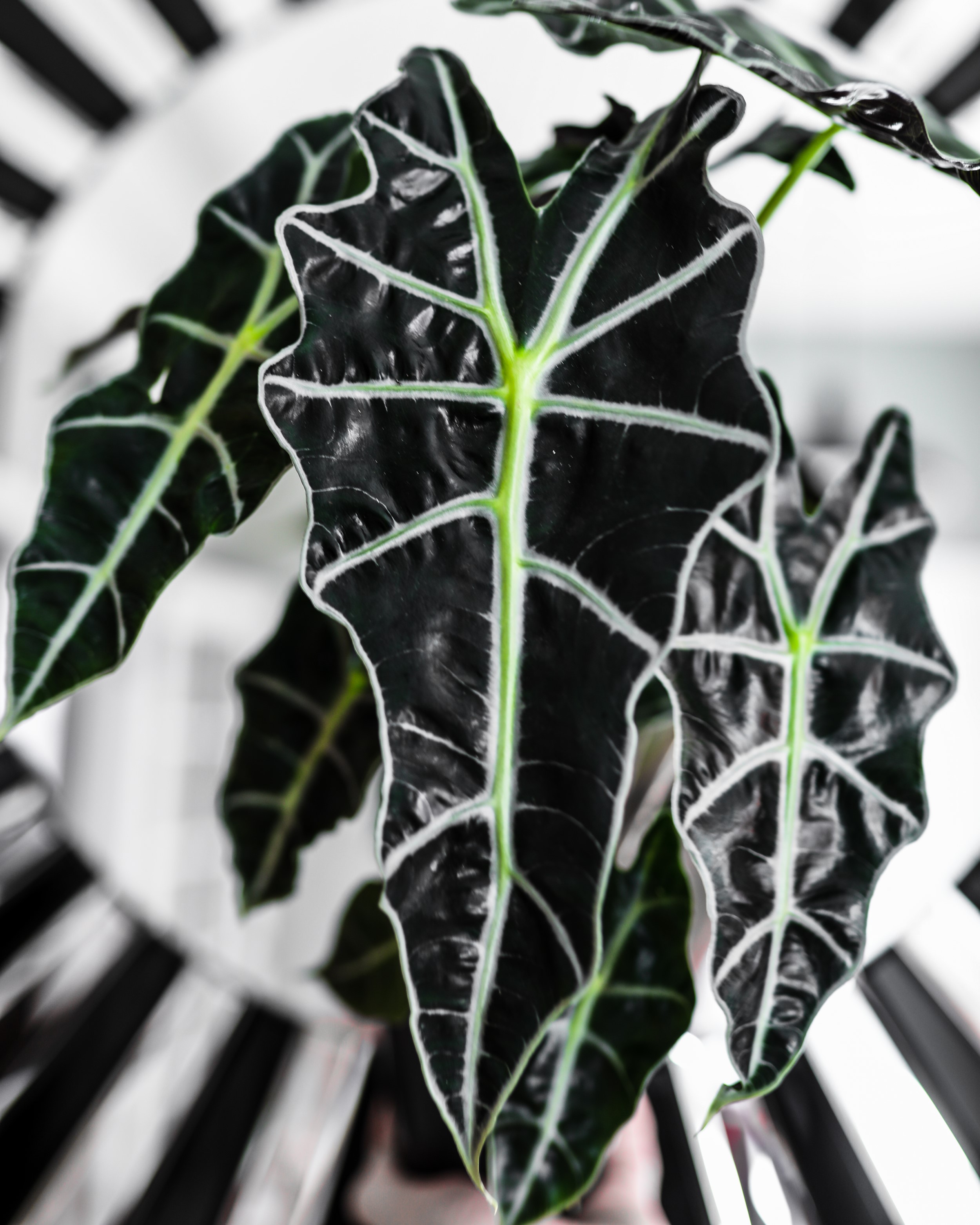Plant Spotlight: Halloween Alocasia
Creating an eerie ambiance in our interior spaces is a favorite part of the Halloween season. Besides the flickering candles, corner cobwebs, and skeletons in the closet, plants can help spook things up! Our favorite spooky plant this season is Alocasia Polly. Its skeleton-like leaf venation is enough to give anyone the heebie-jeebies, making it the perfect addition for Halloween home decor.
Lately, alocasia has us all enthralled in the plant world, but what gives it that bewitching allure? Maybe it’s the striking contrast between its white venation and dark leaves; maybe it’s the beloved elephant ear shape; or, maybe it’s just the fact that everyone is seeking it out and we want it first. In any case, alocasia has our attention and we’ve decided to put it on a pedestal this season. Enter: Halloween Alocasia!
Style with it...
Bold black accents are a trend during the Halloween season and the dark leaves of alocasia are just the thing to spook up your home! Incorporate it into a tablescape or entryway to greet Halloween guests or trick-or-treaters. Funky pumpkins, gourds, and dried grasses can all be incorporated into your design to create texture and form using botanical themes (because we know in a “plants vs zombies” scenario, plants always win).
If you have a flair for theatrics, stringing faux cobwebs from leaf to leaf accentuates the leaf veins and makes them jump out at you almost as if they were a real spider. Play with it! Because of its distinct form and coloring, it’s the perfect plant to get your ghoulish creativity flowing.
Care for it...
Alocasias are geophytes, storing a bulk of their water and nutrients in specialized underground storage structures called tubers. Actually, another popular tuber you may have heard of is Solanum tuberosum--the potato! Because of their unique adaptation and natural habitat, alocasias like well-drained soils to avoid decay of their tubers. They fill containers quickly, so they may need repotting into fresh media and a slightly larger container every 1-2 years. Don’t get too crazy, though! Planting in too large a container can drown the tubers in excess moisture and media. It’s better to repot frequently, sizing up gradually.
Alocasia’s tubers also allow it to withstand longer periods between watering than some of its houseplant brethren. Water only when the top 2” of media is dry but avoid allowing the media to dry too much as it can lead to unsightly yellow-brown leaf tips.
Watch out! Mites just might eat your alocasia (and other plants) alive! Mites are the scariest pest this time of year, so keep an eye out for the not-so-faux webbing that might appear on leaf undersides. Control and treat by manually wiping the leaves with a damp cloth weekly and lightly misting the leaves in the mornings. Mites hate moisture! If all else fails, a neem oil treatment may be in order. Just make sure that you don’t place the plant in a bright or warm area for 24-48 hours after treatment to avoid leaf scorch.
There you have it! We laid out several reasons to add alocasia to your collection this season. There are no excuses; go out and find one at HEB stores this month so you’re equipped for anything that comes your way this Hallows’ Eve...
How will decorate with plants this Halloween? Share with us @maxandmilesplants on Instagram.








